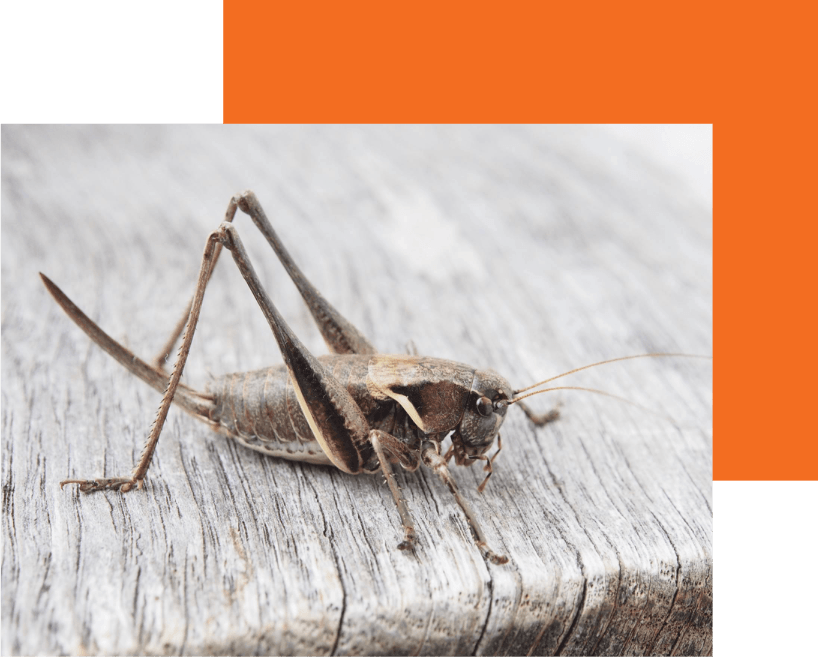Crickets
Crickets are an interesting insect. Some cultures have been charmed by these chirpy, quirky critters and admire them. Asian countries such as Japan and China consider them good luck. Certain species are considered symbols of hope and prosperity in Brazil. Even English cultures are not fully immune to their noisy allure—both Dickens' literature and Disney cartoons feature lovable, memorable characters that happen to be crickets. But Jiminy Cricket aside, most people in the States think of them as pests. They can be annoying and destructive when they infest our homes, which they do with aggravating regularity.
In Missouri and Illinois, they most often find their way indoors when outdoor temperatures drop in the fall, although it can still happen throughout the year. Like most pests, they are attracted to places that offer warmth, water, food, and shelter. They get in easily through tiny openings. Once inside, they like to feed on cotton, wool, silk, and leather. Nary your curtains, couch, or clothes are safe from their ill-intentions. Also, not safe—your pet's food dish, the fruit bowl, the herbs on your windowsill, or your houseplants. Indeed, most items in your home are fair game to this voracious insect.
They may do a considerable amount of damage within your home, not only from their destructive feeding habits but also from their waste, which can leave ugly stains. They also create unsanitary conditions that threaten your health. Crickets are known to spread diseases and parasites, including salmonella, E. coli, and worms.
All that being said, if you have a cricket problem, you probably already know that the most irritating thing about them isn't that they are eating or the health concerns they bring. No, the worst thing about them is that they sing. Crickets are infamous for the disruptive, unrelenting noise they make—and they do that a lot. The noise doesn't come from their vocal cords or rubbing their legs together (a common misconception). They make that noise, called stridulation, by strumming a tiny nub at the top of their wings called a scraper along the wrinkly surface of their wing, called a file.
Believe it or not, it is the males who are making all that racket, not the females. They sing to attract mates and warn off romantic rivals; what men will do for love. It has even been documented that female will fight over a particular male. However, unlike humans, the cricket ladies only engage in this brawling behavior during the male's concert. A species called Mole Crickets take their performances so seriously that they dig out cavernous, horn-shaped burrows that resemble tiny stadiums—and it amplifies their song just like a rock concert.
In Missouri and Illinois, the most common cricket species that tend to invade homes are field, ground, cave, house, and those rock-star Mole Crickets. But no matter which species has found its way into your home, they can be a daunting challenge to get rid of because of how deeply they penetrate the structures and furnishings. Over-the-counter pesticides don't work well. They are becoming increasingly resistant to common products, and those treatments do not penetrate the nests. Your best bet is to seek the assistance of a professional exterminator.
At Cardinal Insect & Pest Solutions, we sing a different kind of song—we promise you total satisfaction and an end to the serenade that's literally been bugging you at night. We're top-rated and, when it comes to dealing with crickets, nobody does it better. Give us a call today.


